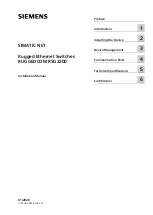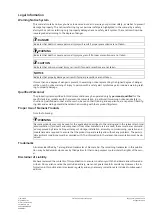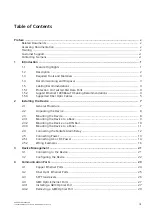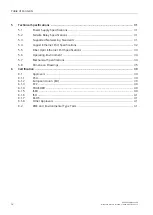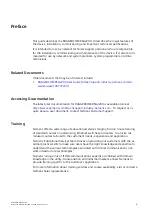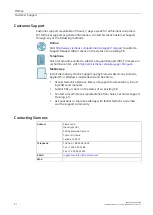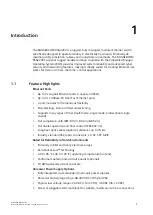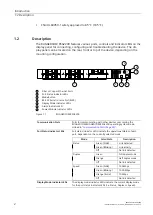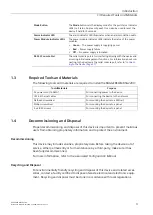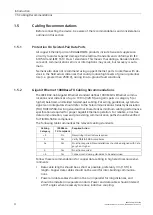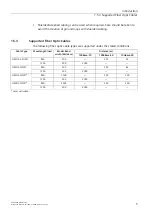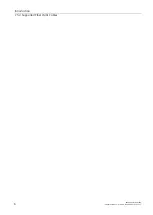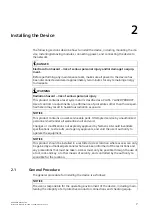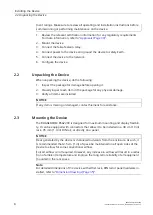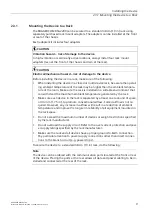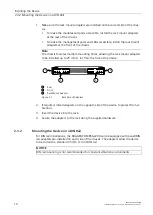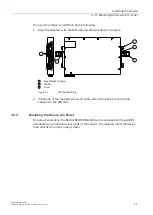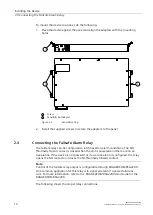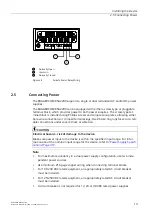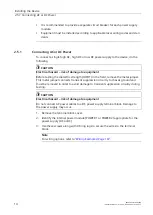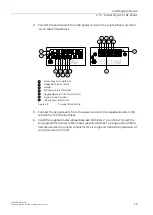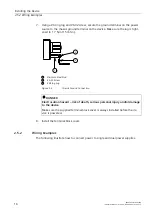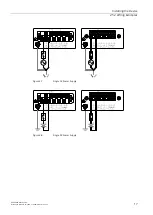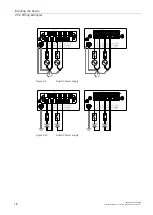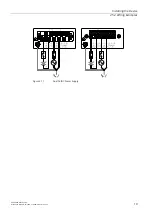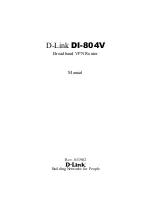
Introduction
1.5 Cabling Recommendations
1.5
Cabling Recommendations
Before connecting the device, be aware of the recommendations and considerations
outlined in this section.
1.5.1
Protection On Twisted-Pair Data Ports
All copper Ethernet ports on RUGGEDCOM products include transient suppression
circuitry to protect against damage from electrical transients and conform with IEC
61850-3 and IEEE 1613 Class 1 standards. This means that during a transient electri-
cal event, communications errors or interruptions may occur, but recovery is auto-
matic.
Siemens also does not recommend using copper Ethernet ports to interface with de-
vices in the field across distances that could produce high levels of ground potential
rise (i.e. greater than 2500 V), during line-to-ground fault conditions.
1.5.2
Gigabit Ethernet 1000Base-TX Cabling Recommendations
The IEEE 802.3ab Gigabit Ethernet standard defines 1000 Mbit/s Ethernet commu-
nications over distances of up to 100 m (328 ft) using all 4 pairs in category 5 (or
higher) balanced, unshielded twisted-pair cabling. For wiring guidelines, system de-
signers and integrators should refer to the Telecommunications Industry Association
(TIA) TIA/EIA-568-A wiring standard that characterizes minimum cabling performance
specifications required for proper Gigabit Ethernet operation. For reliable, error-free
data communication, new and pre-existing communication paths should be verified
for TIA/EIA-568-A compliance.
The following table summarizes the relevant cabling standards:
Cabling
Category
1000Base-
TX Compliant
Required Action
< 5
No
New wiring infrastructure required.
5
Yes
Verify TIA/EIA-568-A compliance.
5e
Yes
No action required. New installations should be designed with Cate-
gory 5e or higher.
6
Yes
No action required.
> 6
Yes
Connector and wiring standards to be determined.
Follow these recommendations for copper data cabling in high electrical noise envi-
ronments:
• Data cable lengths should be as short as possible, preferably 3 m (10 ft) in
length. Copper data cables should not be used for inter-building communica-
tions.
• Power and data cables should not be run in parallel for long distances, and
should be installed in separate conduits. Power and data cables should intersect
at 90° angles when necessary to reduce inductive coupling.
4
RUGGEDCOM RSG2200
Installation Manual, 01/2020, C79000-G8976-1043-15


